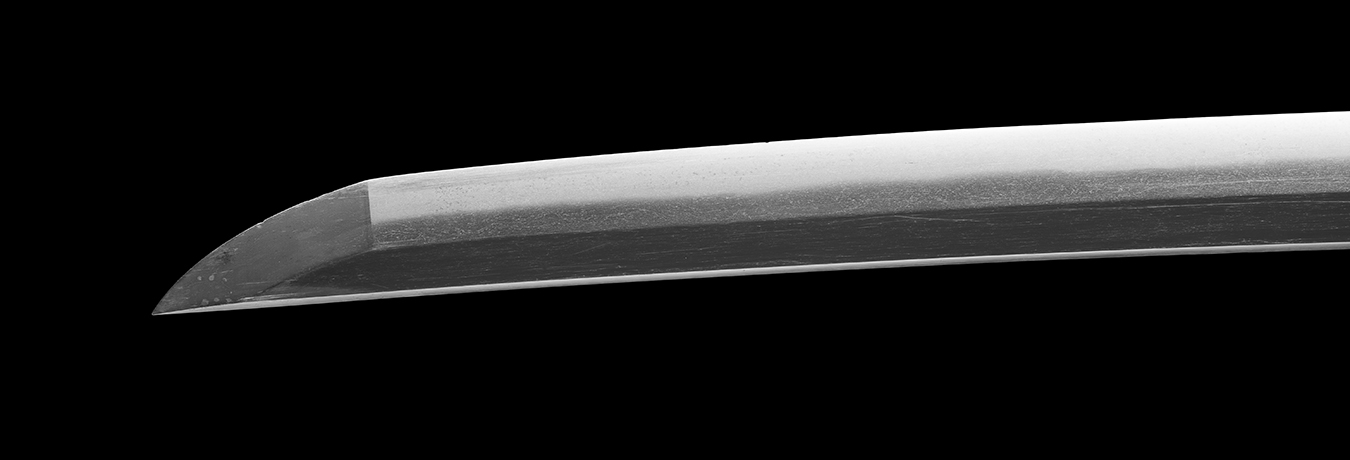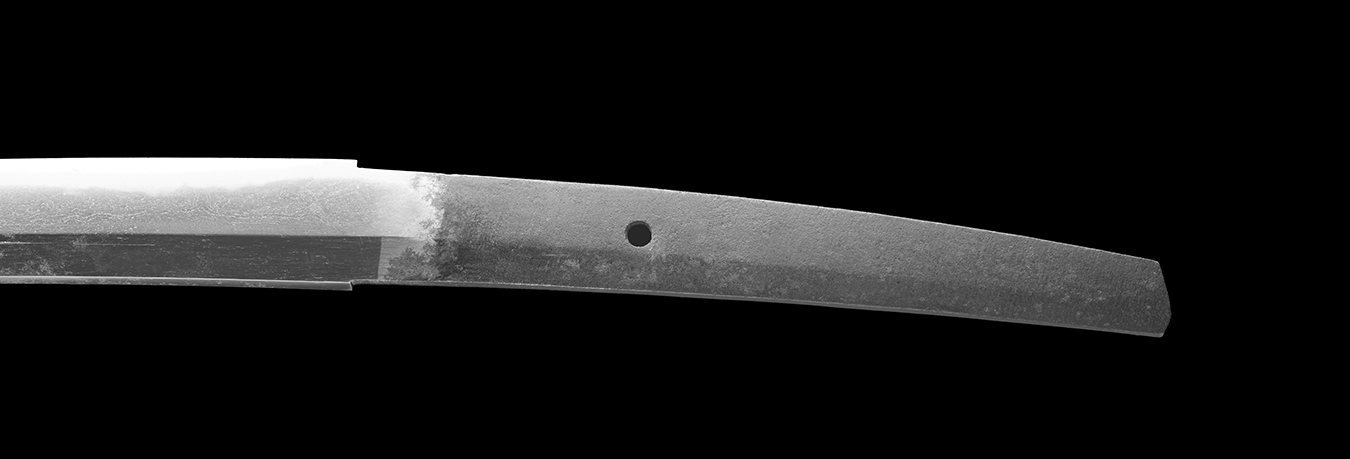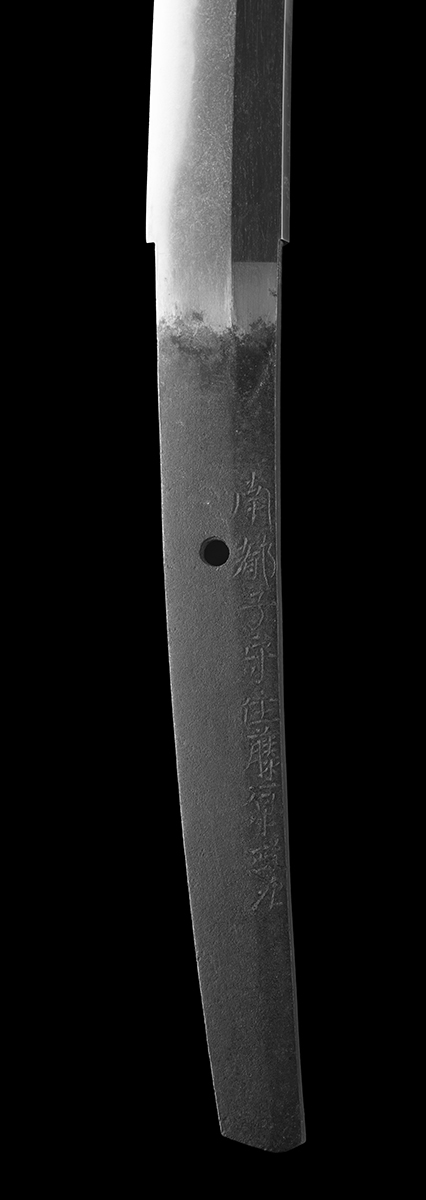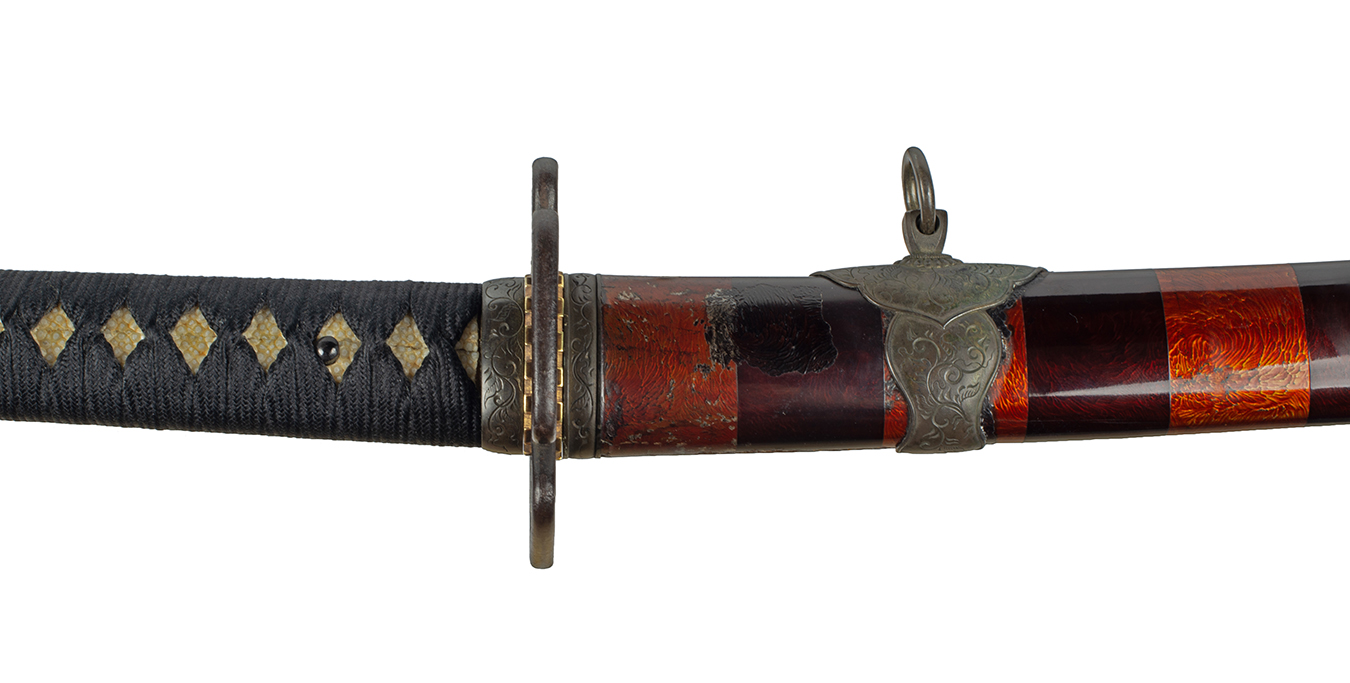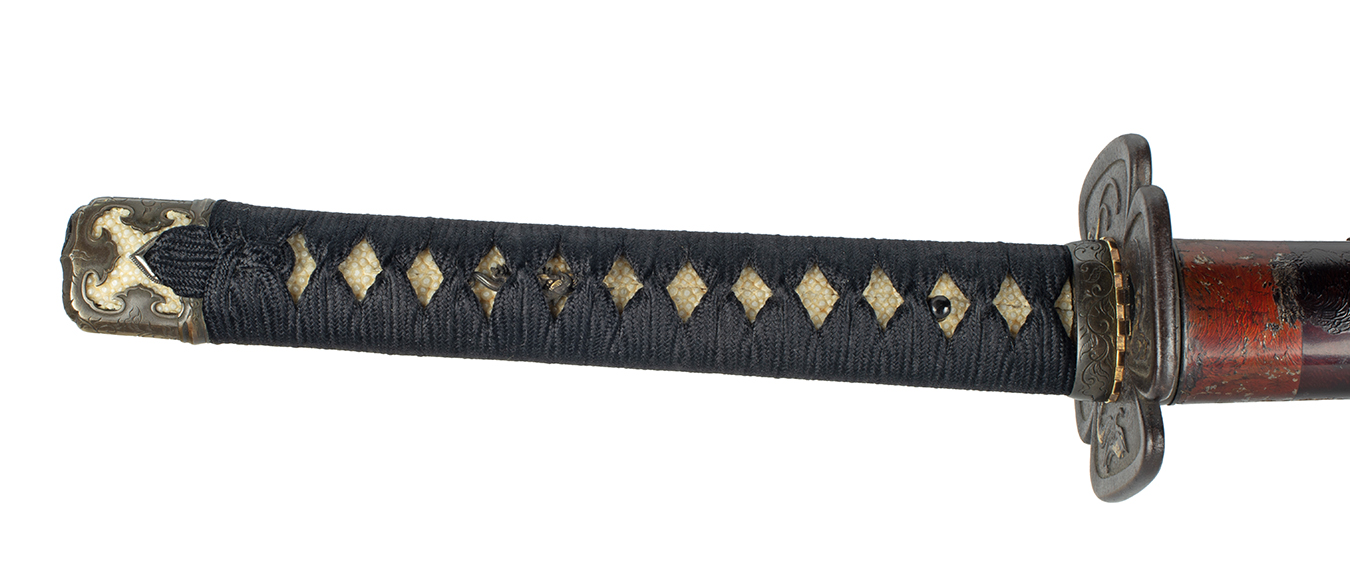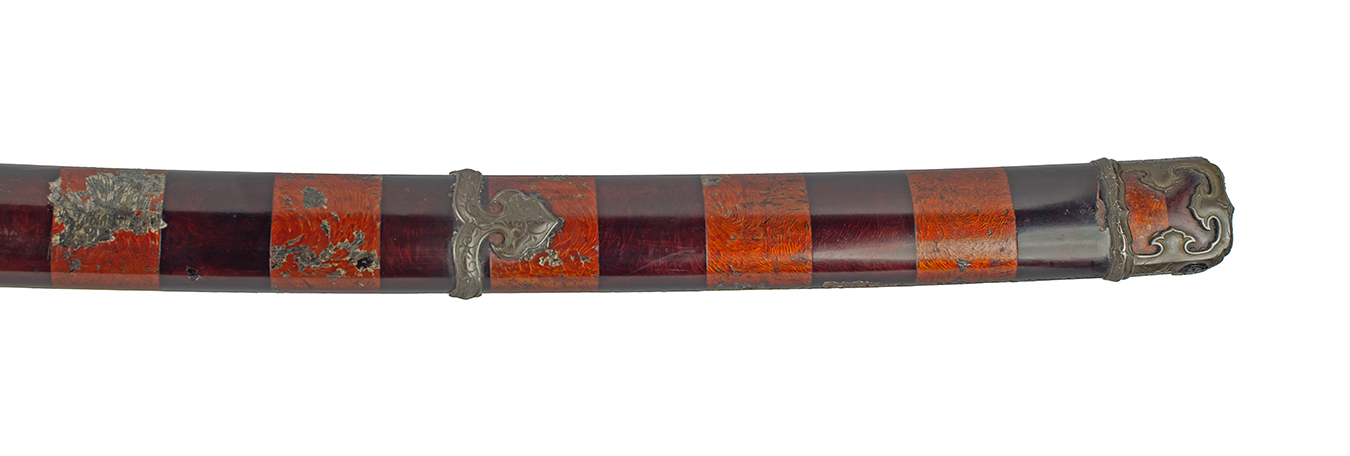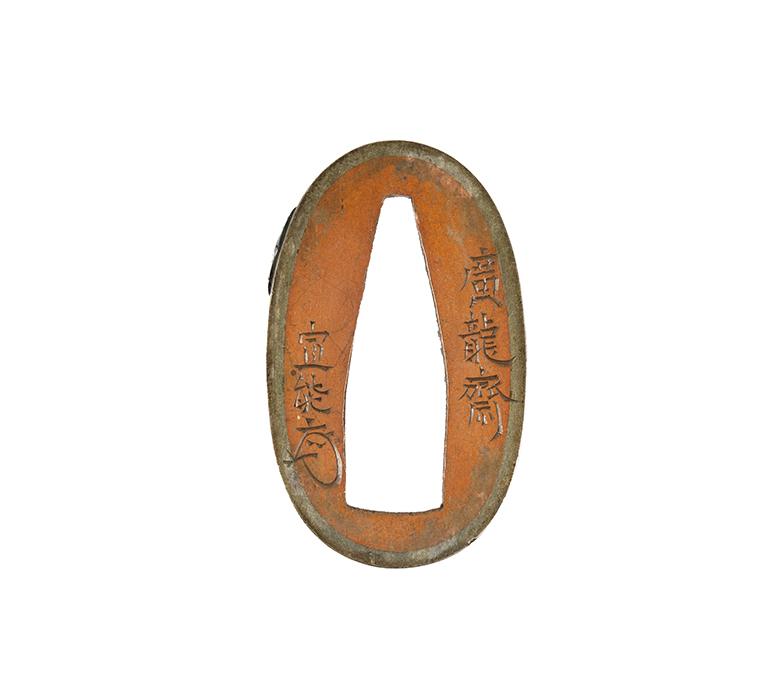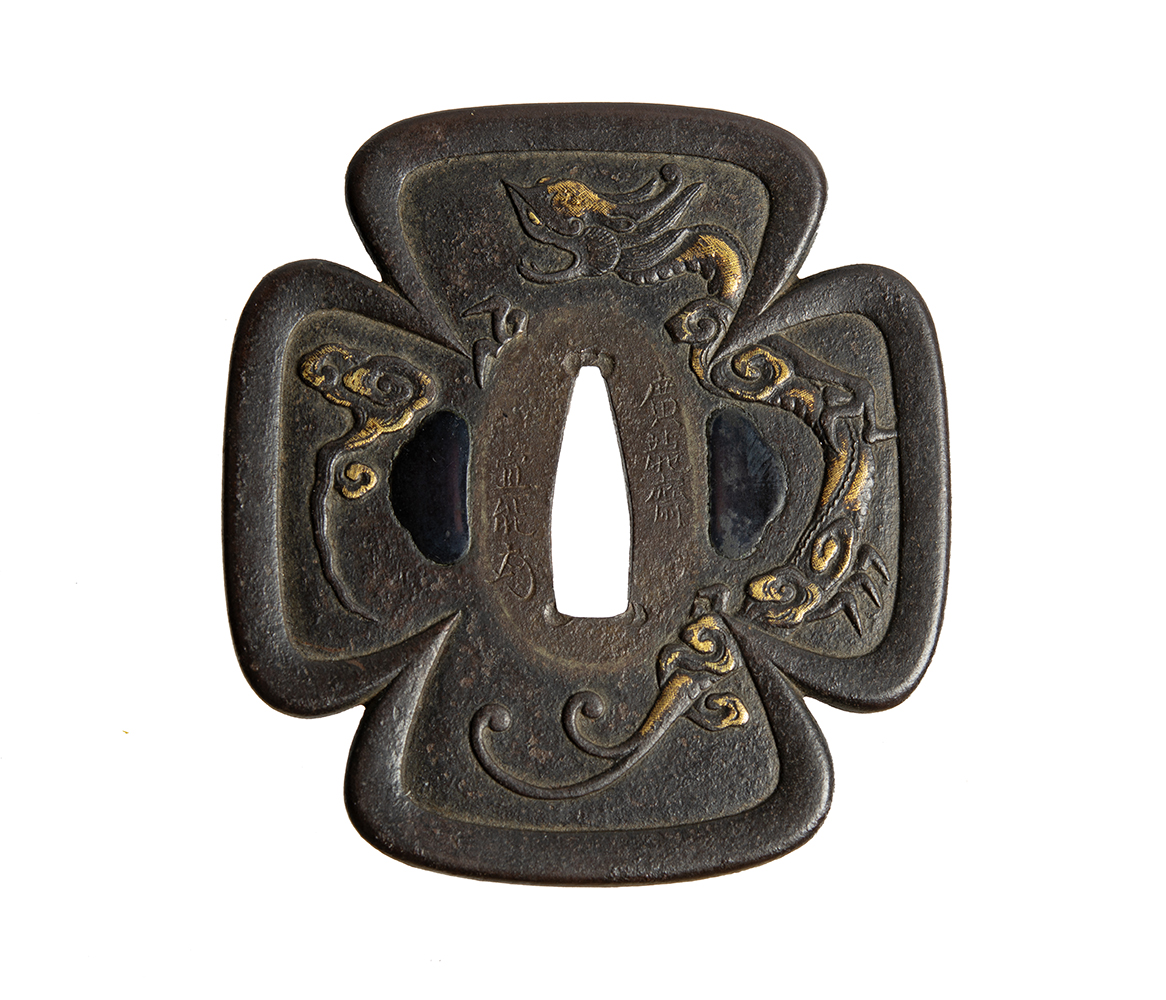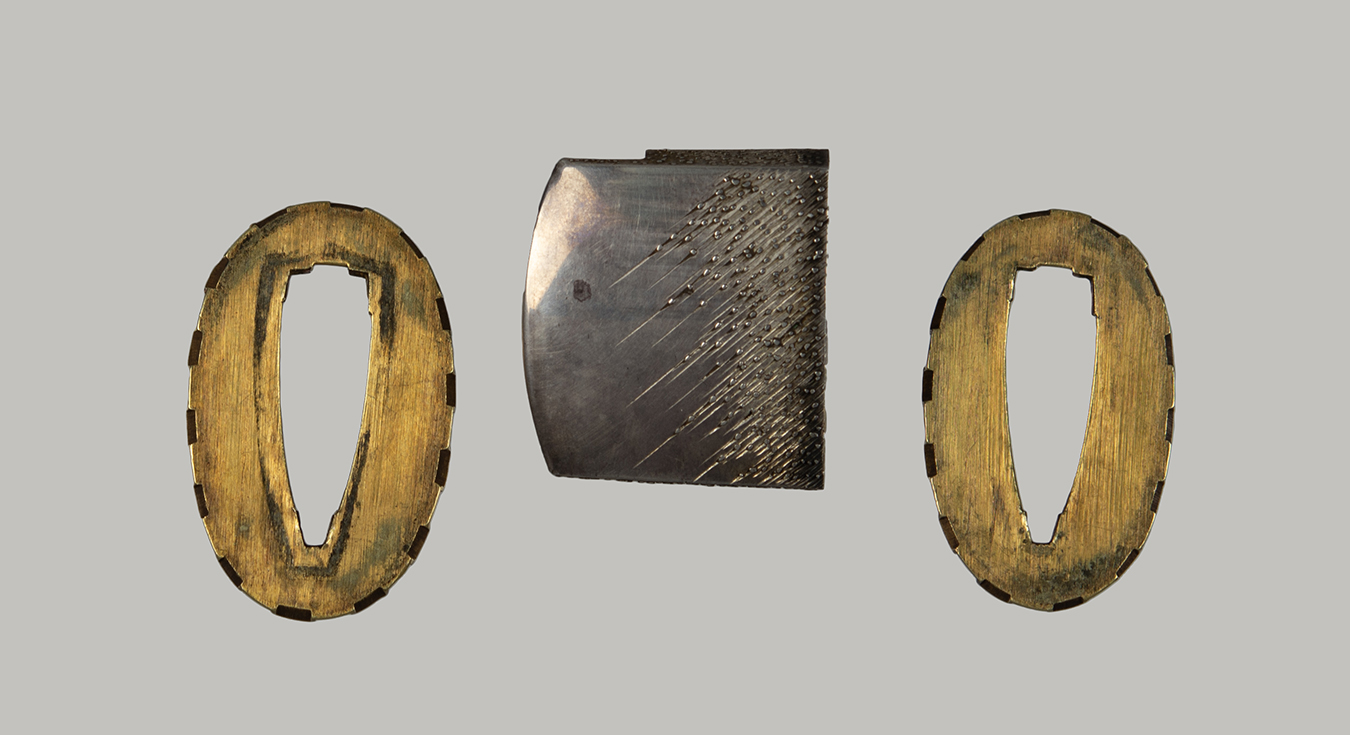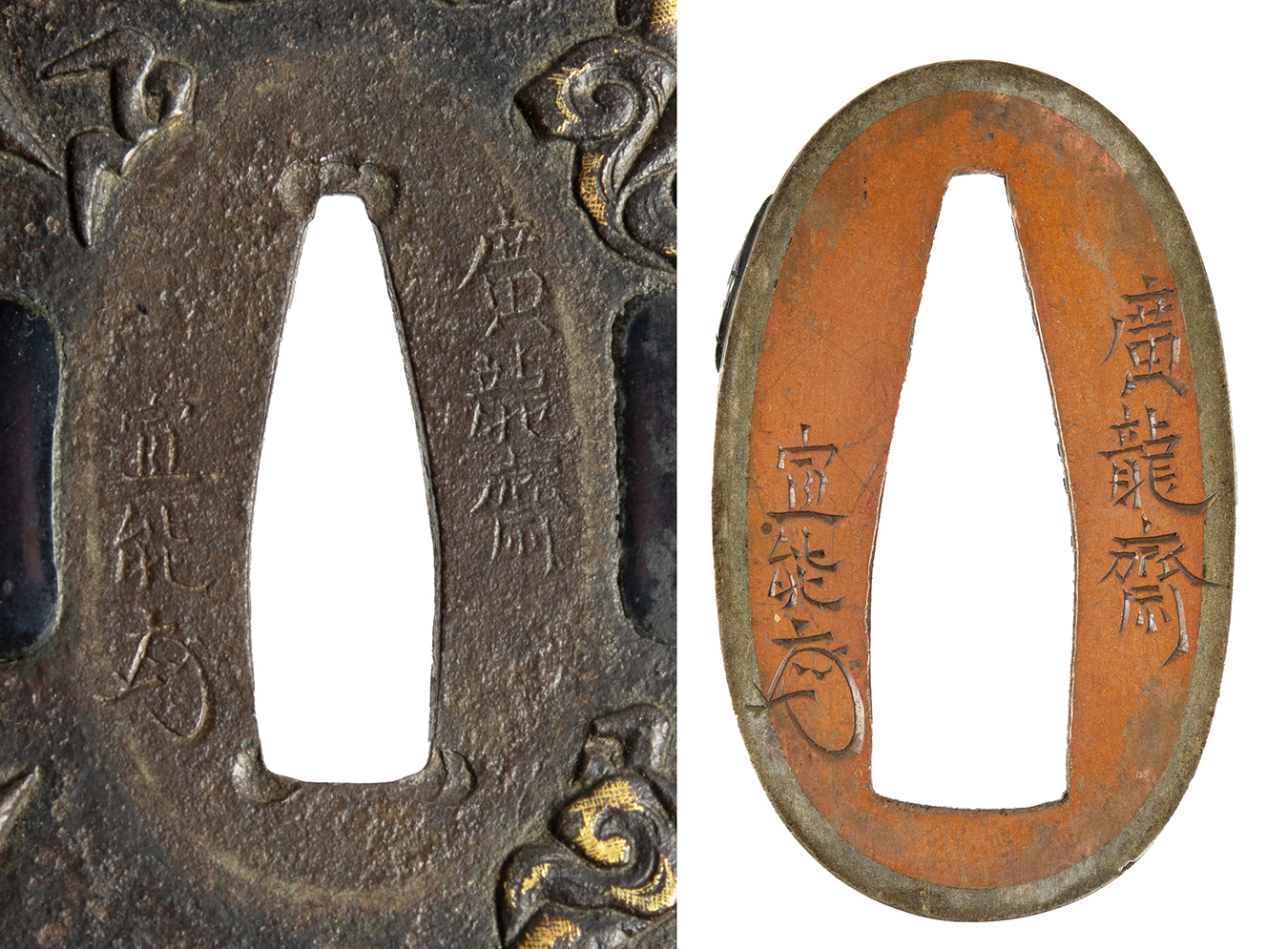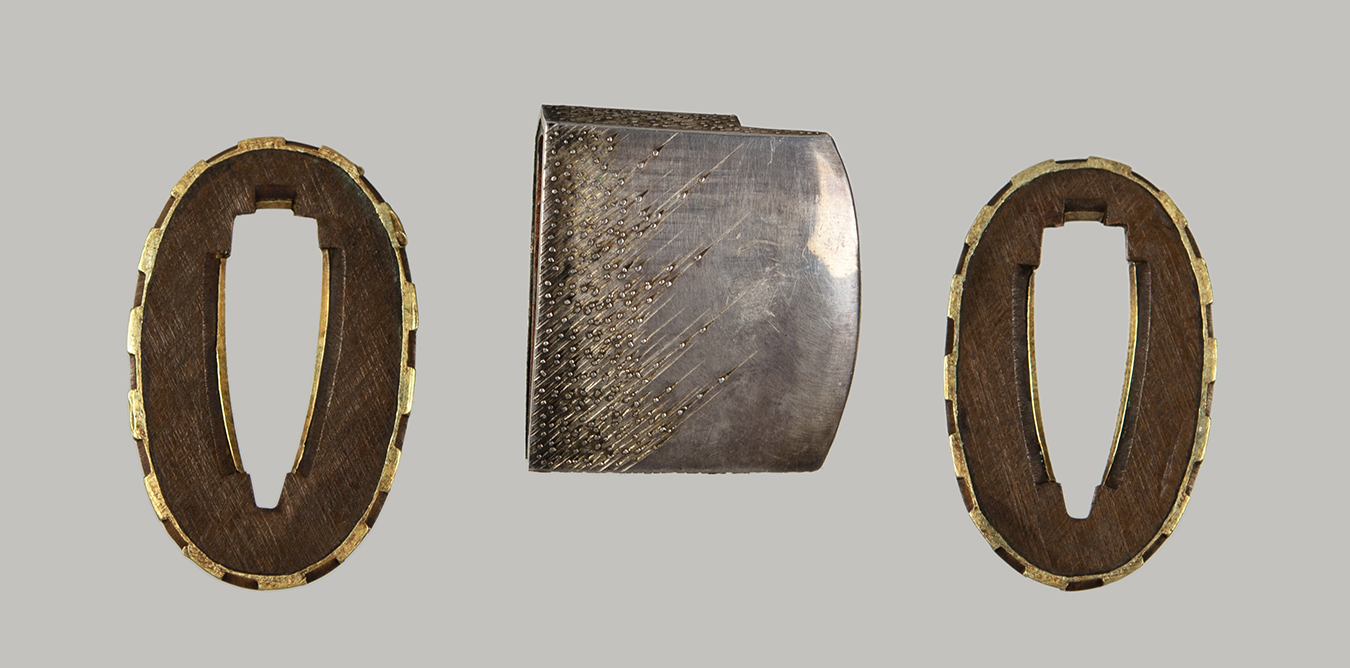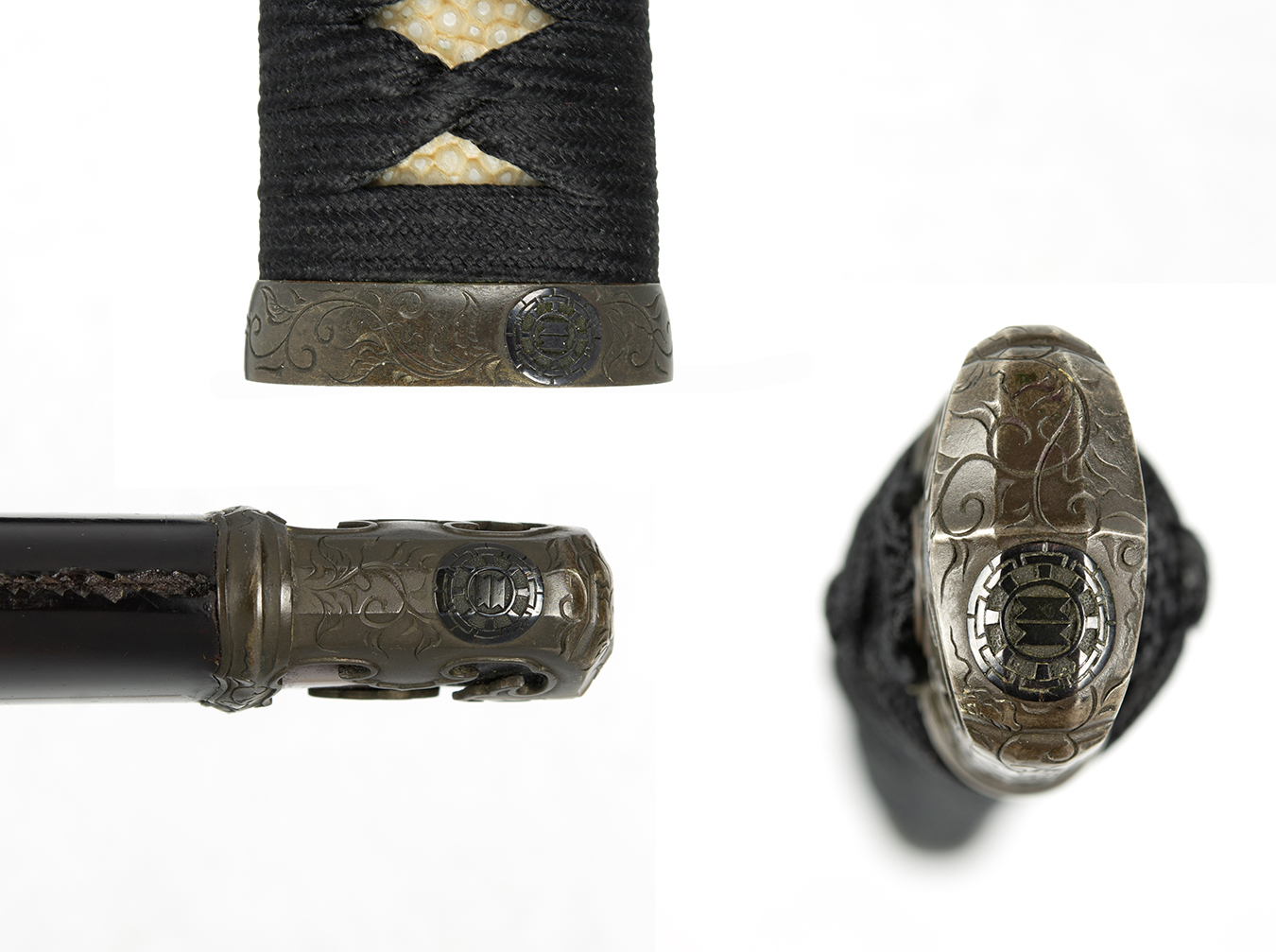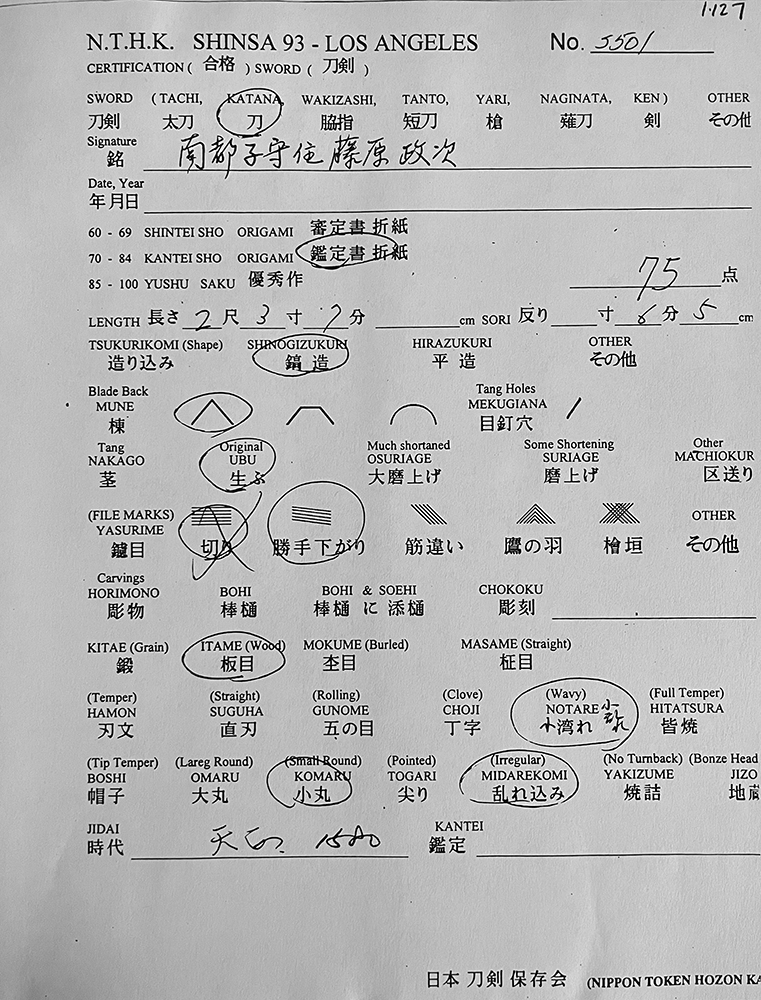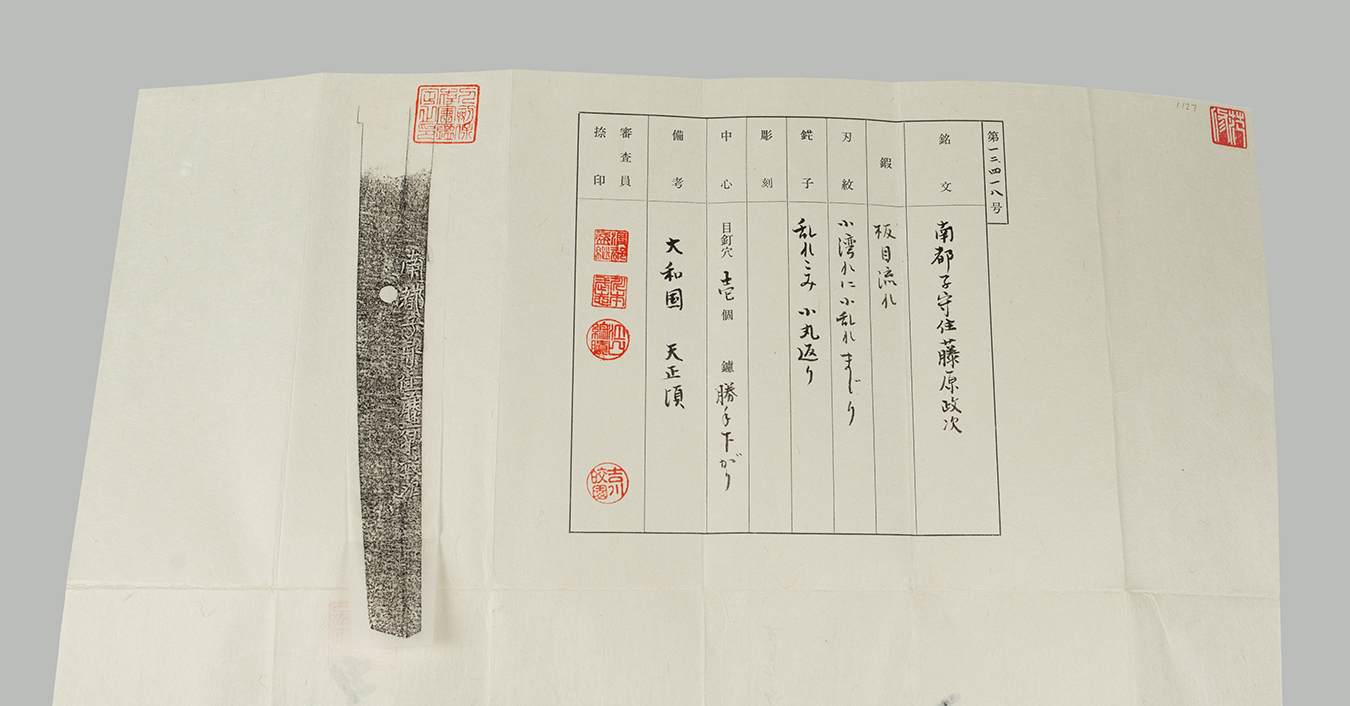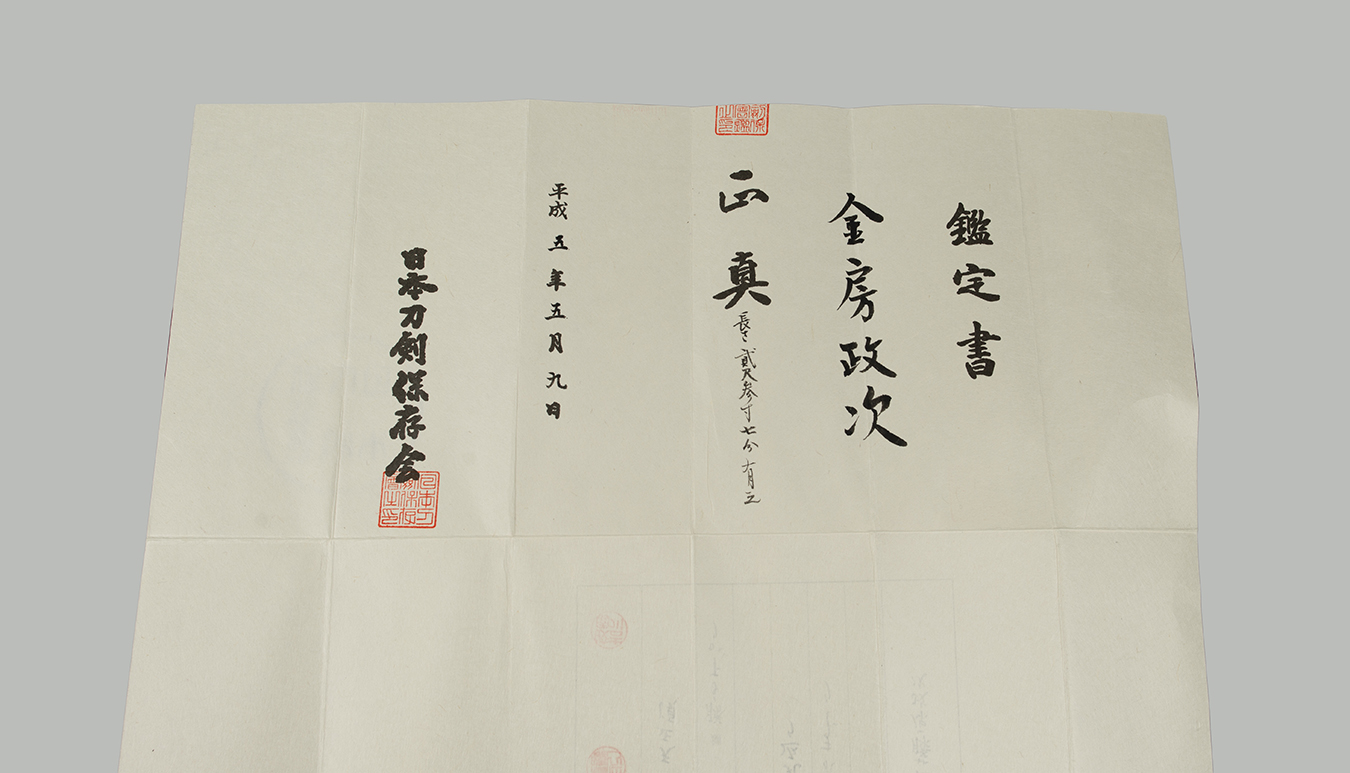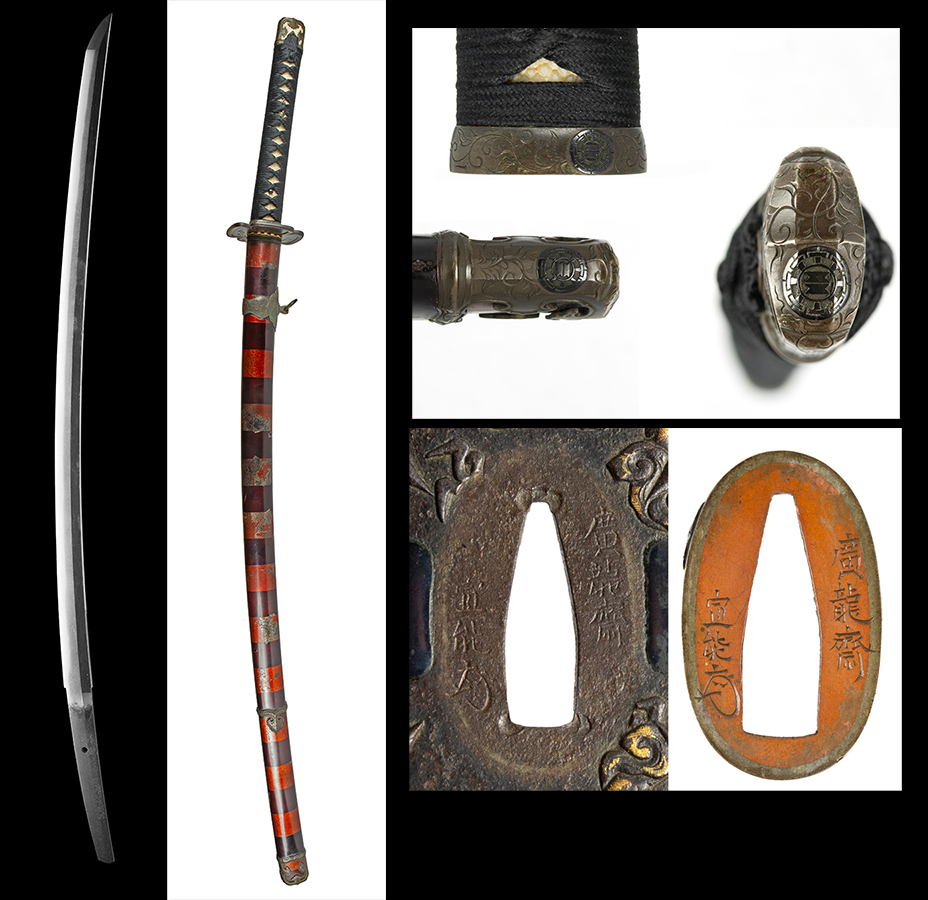|
| |||||||||||||||||||||||||||||||||||||||||
Hamon : Wide sugu-based ko-midare. The nioi-guchi is tight. There are togari here and there. Many yo are present.
Boshi : Ko-maru that is slightly midare with a pointed return.
Kitae : Itame and mokume nagareru. The is a robust jigane but there is no loose hada or kitae-ware. The forging pattern is clear and visually dynamic.
About this sword : A remarkably healthy koto katana by Kanabo Masatsugu. This katana is by the younger brother of the shodai Masatsugu who was active around Tensho (1573-1592). The Kanabo smiths worked in Yamato and were the last active group there. Here is an overview of the well-known Kanabo smiths. The following information is from the Tokotaikan pg 595 and 596 and the Nihonto Meikan.
Masatsugu 3 million yen (ranking) Tenmon (period) Yamato (location)
This smith was active around Tenmon to Koji (1532-1557) His style is wide mihaba with long kissaki with a thick, very strong, robust shape. Itame mixed with masame that is hada-tachi with ji-nie. Hamon has a tight nioi-guchi. Hiro-suguha, ko-midare, gunome-midare are seen. There is ashi and yo inside hamon and his horimono tends to be complicated.
Masatsugu 3 million yen (ranking) Koji (period) Yamato (location)
Younger brother of the previous Masatsugu and similar style of work. * Note: other sources say this is the son of the Shodai.
In addition to the two Masatsugu listed above, the Nihonto Meikan, 2nd edition, page 909 also lists a 3rd Masatsugu. He was the son of the first generation and was active around Tensho. *Note: other sources say this is the younger brother of the Shodai. The Tensho era is the period that the NTHK stated on the Kanteisho paper for this katana.
The Kanabo smiths are descended from the Yamato tradition. This blade shows a strong Yamato flavor in its robust jigane and sugu-based hamon. This katana is ubu and zaimei. There are no kizu. Nakago and blade fumbari are present. It is a very healthy koto blade. This is in old polish with stains and scratches. Special note should be made that this katana received 75 points from the NTHK shinsa team under Yoshikawa Kentaro back in 1993. The awarding of points was markedly more conservative under Yoshikawa Sensei. 75 points for a blade in old polish was something to get excited about. The score reflects the quality and health of the blade as well as the importance of the zaimei ubu nakago.
The koshirae for this blade is wonderful. This is an issaku handachi koshirae made by Koryusai Nobuyoshi, for a Samurai of the Hattori clan. Nobuyoshi was active around 1850. The fuchi and tsuba both are signed by Koryusai Nobuyoshi. The kuruma (cart wheel) kamon of the Hattori clan is present on the fuchi, kashira and ko-jiri. So we have a rare example of a complete and original issaku koshirae that we can date based on the makers active period and we know what family owned the blade based on the mon. This koshirae and blade have a combined empirical importance that is so elusive to obtain - the true origin of a blades complete koshirae and therefore a true fact window for the history of the blade.
The tsuba is a large iron example with takabori of a water dragon. The rest of the fittings are shakudo with kebori and suemon inlay of Hattori mons. The laquer work on the saya is visually stunning but in need of restoration. The menuki are of water dragons, matching the tsuba. The tsuka ito looks to be modern and cotton.
A long and healthy zaimei Kanabo katana with the provenance of once belonging to the Hattori clan and issaku koshirae by Koryusai Nobuyoshi.
Price : $15,000






